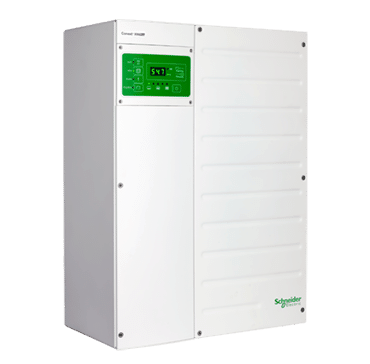Hi, I have recently installed a 6.4kw enphase Micro inverter system, and is looking into install a subpanel and AC coupled battery solution to provide battery backup for things like fridge / network / some lighting / few plugs. However, besides putting these essential circuits in the sub panel, I likely will also include several more circuit that are not essential but power hungry ( Think 240v EV charger / Table saw / other woodworking tool ).
My goal for the battery is more for emergency battery backup than Time of use load shift. It would be nice to do load shift, but the primary reason is to handle brownouts ( Dame PG&E.. )
Currently I am not considering solutions like Ensemble / Powerwall mainly due to cost / performance. I hope to get this done with a smaller budget.
I saw the 48V DIY LiFe battery bank, seems to be a great solution for the battery side. Still reading more to find out which inverter are best for my need. ( hope to be able to supply at least 4-6kw, more kw would be great too. budget for inverter hope to be less than 3k ). Would apperciate suggestion for inverter and battery setup too.
But before getting to much into the inverter selection, my main question right now is the wiring.
I am still in the phase of trying to finalizing the wiring of the sub panel, and as I started to read about the inverter installation document, I find one popular way to install the inverter is to have it sit between the main panel and the essential panel. Generally it looks like this:
Main Panel ====== Battery inverter ====== Sub Panel with essential load ===== Solar AC breaker === combiner and array
However with the battery inverter in the circuit, the max current it can pass through become limited by the battery inverter. Currently I have only seriously read about the manual for Magnum MS4024, but seeing that it limits the current to 30A 240v makes me like this kind of setup less..
Also, what happens when you need to service the battery inverter for some reason? The essential panel and solar will need to be switch off too at that point.
I wonder how everyone solve this issue?
I am thinking of 2 possible way to get around this:
1. Add some kind of bypass transfer switch before the essential panel (maybe this? ), so we can manually choose power source of the essential panel to be main panel or the battery inverter, and get to uee higher current (in my case 60A) when directly connected to main panel.
2. Use multi-circuit transfer switch like this, so to the essential panel, the battery inverter is like a generator and never sits in between the two.
In both solution, the battery inverter still hooks up to the main panel for the upstream AC side to sense if the grid is up.
Which one of the above solution looks right? Or what will be a better way to solve this issue?
My goal for the battery is more for emergency battery backup than Time of use load shift. It would be nice to do load shift, but the primary reason is to handle brownouts ( Dame PG&E.. )
Currently I am not considering solutions like Ensemble / Powerwall mainly due to cost / performance. I hope to get this done with a smaller budget.
I saw the 48V DIY LiFe battery bank, seems to be a great solution for the battery side. Still reading more to find out which inverter are best for my need. ( hope to be able to supply at least 4-6kw, more kw would be great too. budget for inverter hope to be less than 3k ). Would apperciate suggestion for inverter and battery setup too.
But before getting to much into the inverter selection, my main question right now is the wiring.
I am still in the phase of trying to finalizing the wiring of the sub panel, and as I started to read about the inverter installation document, I find one popular way to install the inverter is to have it sit between the main panel and the essential panel. Generally it looks like this:
Main Panel ====== Battery inverter ====== Sub Panel with essential load ===== Solar AC breaker === combiner and array
However with the battery inverter in the circuit, the max current it can pass through become limited by the battery inverter. Currently I have only seriously read about the manual for Magnum MS4024, but seeing that it limits the current to 30A 240v makes me like this kind of setup less..
Also, what happens when you need to service the battery inverter for some reason? The essential panel and solar will need to be switch off too at that point.
I wonder how everyone solve this issue?
I am thinking of 2 possible way to get around this:
1. Add some kind of bypass transfer switch before the essential panel (maybe this? ), so we can manually choose power source of the essential panel to be main panel or the battery inverter, and get to uee higher current (in my case 60A) when directly connected to main panel.
2. Use multi-circuit transfer switch like this, so to the essential panel, the battery inverter is like a generator and never sits in between the two.
In both solution, the battery inverter still hooks up to the main panel for the upstream AC side to sense if the grid is up.
Which one of the above solution looks right? Or what will be a better way to solve this issue?




